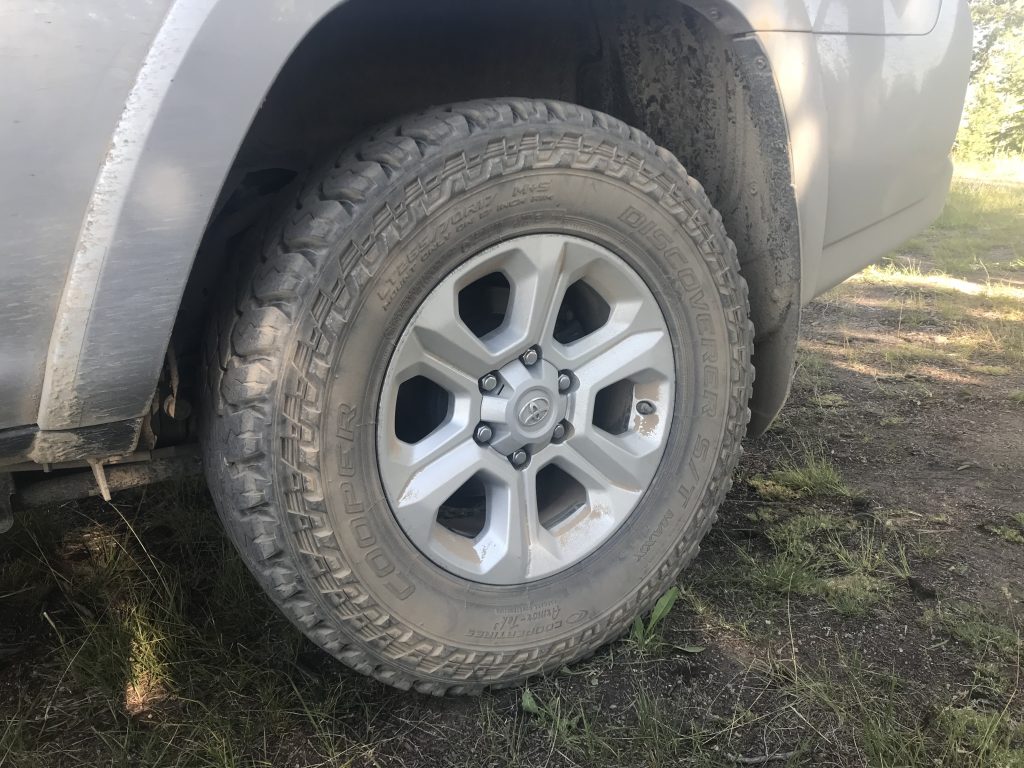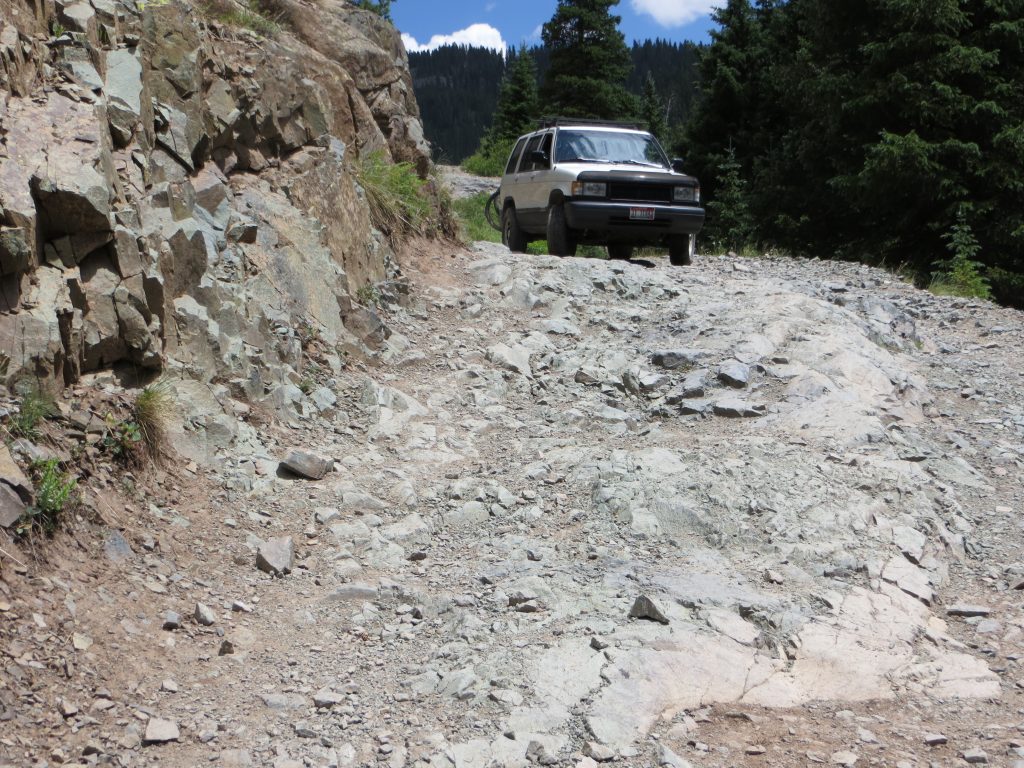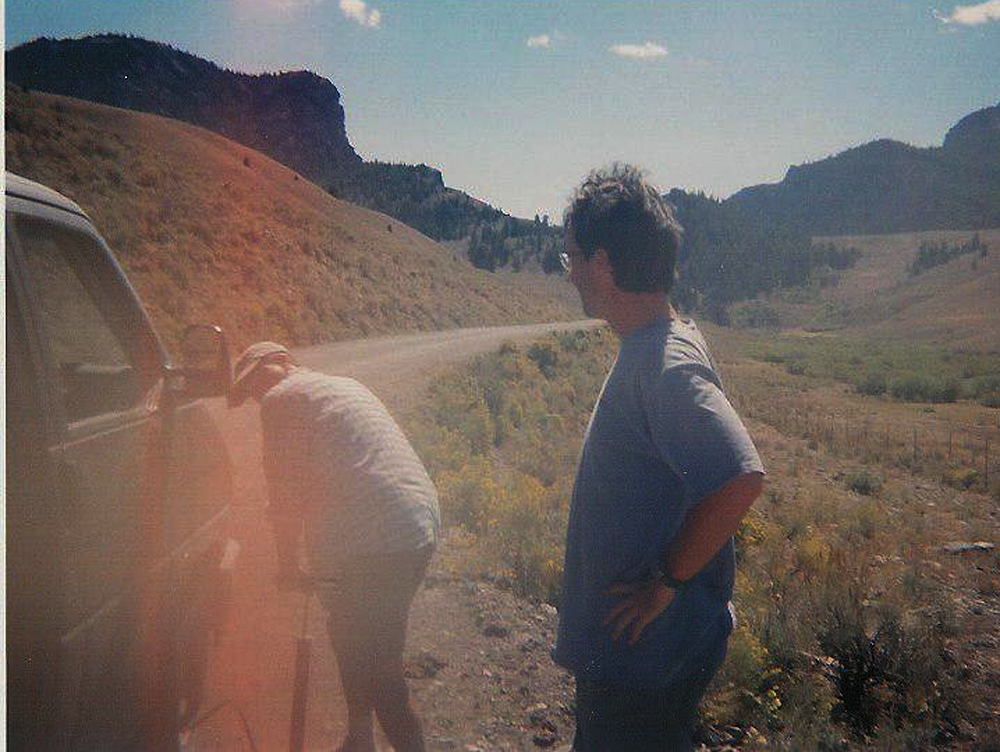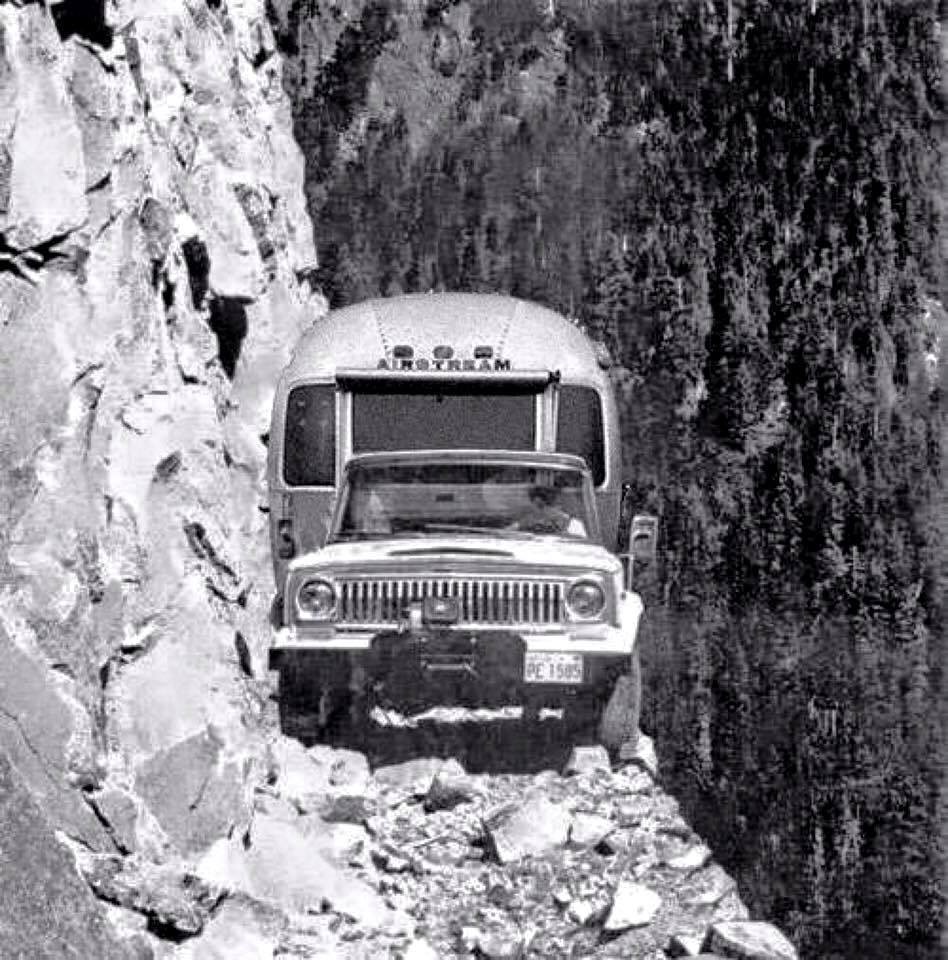Expect the unexpected when driving in the mountains. Historically, recreational use of Idaho’s mountains has taken a backseat to logging, mining and grazing. Consequently, road access to many places is poor. Recreational use has drastically increased over the last 20 years and land managers have slowly improved access routes in response. Nevertheless, you must plan for and be ready for difficult and dangerous road conditions.
Vehicle Type
Almost all of Idaho’s mountain roads (paved, gravel or dirt) will, depending upon weather conditions, require the use of four-wheel drive (4WD) or a high-clearance vehicle at one time or another. In many places, you will find that the approach to a climb can be accomplished only on foot or with 4WD.
To be clear, 4WD refers to a vehicle with a transfer case that includes four-wheel drive high and four-wheel drive low, skid plates and, at least, all-terrain tires. The 4WD designation does not include all-wheel drive vehicles or two-wheel drive passenger vehicles. Most vehicles are not 4WD.
While many think that the true benefit of a 4WD is for climbing up steep rocky roads, the use of a 4WD’s low range in first gear to descend steep roads is, perhaps, the most important feature. A 4WD in low range, first gear, can slowly creep down steep rocky roads. This makes it less likely you will puncture a tire, overheat the brakes or lose control.
Cooper Discoverer S/T tires are good example of strong 4WD tires. However, no tire is indestructible. Drive slowly on rocky roads.
Conditions
Many roads are so poor that they require not only 4WD but also the driving skills to use the vehicle safely on treacherous terrain. You need to learn the “ins and outs” of driving a 4WD before tackling difficult 4WD roads.
The book and this website attempt to identify all roads that require something more rugged than a passenger sedan, stating “a 4WD is recommended” or “a 4WD is required.” Nevertheless, this is no guarantee that roads not identified as such may require a 4WD. You must assess the drivability of any mountain road when you are using it. If the road deteriorates or becomes unsafe—STOP!
Also, keep in mind that conditions change from season to season and from year to year. The roads listed in the book or on this website may have become impassable. Be prepared for the worst on every trip because trees fall across roads, stream crossings can vary from inconsequential to life threatening, mud holes come and go, and vehicles break down.
Over the last 30 years large sections of Idaho’s mountains have burned. As a result many miles of access roads pass through burned forests. Falling trees blocking roads are an ever present problem. You could easily run into downfall that will block access to trailheads or trap you a long way from civilization. Always pack a timber saw or chainsaw, axe, leather gloves, and towing/skidding straps so you can cut your way out of deadfall in burned areas.
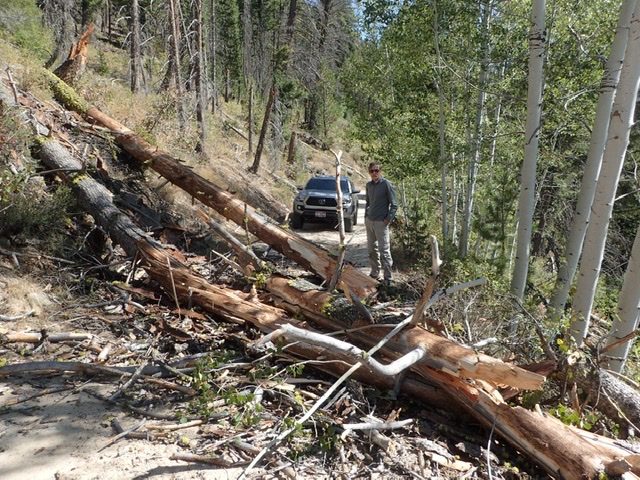
Be prepared! Judi Steciak reports this “picture was the worst of the deadfall that we cleared off the road into Josephus Lake.” Judi Steciak Photo
Always think in terms of self-rescue. Carry extra water and a good tire jack. Make sure that your spare tire is fully inflated. Consider taking tire chains, a shovel and an ax or small chainsaw if you are going to one of the State’s many remote trailheads. Most of all, be prepared to take your time, drive slowly and expect the drive to take twice as long as you planned!
Also be prepared for water crossings….
NEVER DRIVE OFF ESTABLISHED ROADS
Vehicle Malfunctions
Vehicle problems can strand you miles from help. It is wise to be prepared to deal with breakdowns. Always be prepared!
Flat Tires. Most Idaho climbers have suffered a flat tire. Some have lost 2 tires on the same trip. Do you know how to change a tire? A can of tire sealant may stop the leak if it is in the tread. A portable compressor that plugs into a vehicle’s 12 volt outlet is recommended over a hand pump but a hand pump still could save the day.
John Platt and friends lost 2 tires on a trip. The first suffered from a hole in the tread. They changed tires and then ripped the sidewall of another tire. They reinstalled the first tire and then pumped it up many times as they made their way out to a repair shop. Luckily, they had a air pump.
Dead Battery. Almost everyone forgets to turn their lights off and drained their battery. Most newer vehicles will shut the lights off after the ignition is turned off. What do you do when when your battery is dead? Portable chargers that have a small backup battery and cables are a good idea and are reasonably priced. If you have one, make sure that it is charged up before you leave home.
A vehicle with a manual transmission can be push started but not vehicles with automatic transmissions. Read up on how this works before you try it. If you are alone, park on a slight incline with the front end pointing downhill so that the vehicle will roll when you push in the clutch.
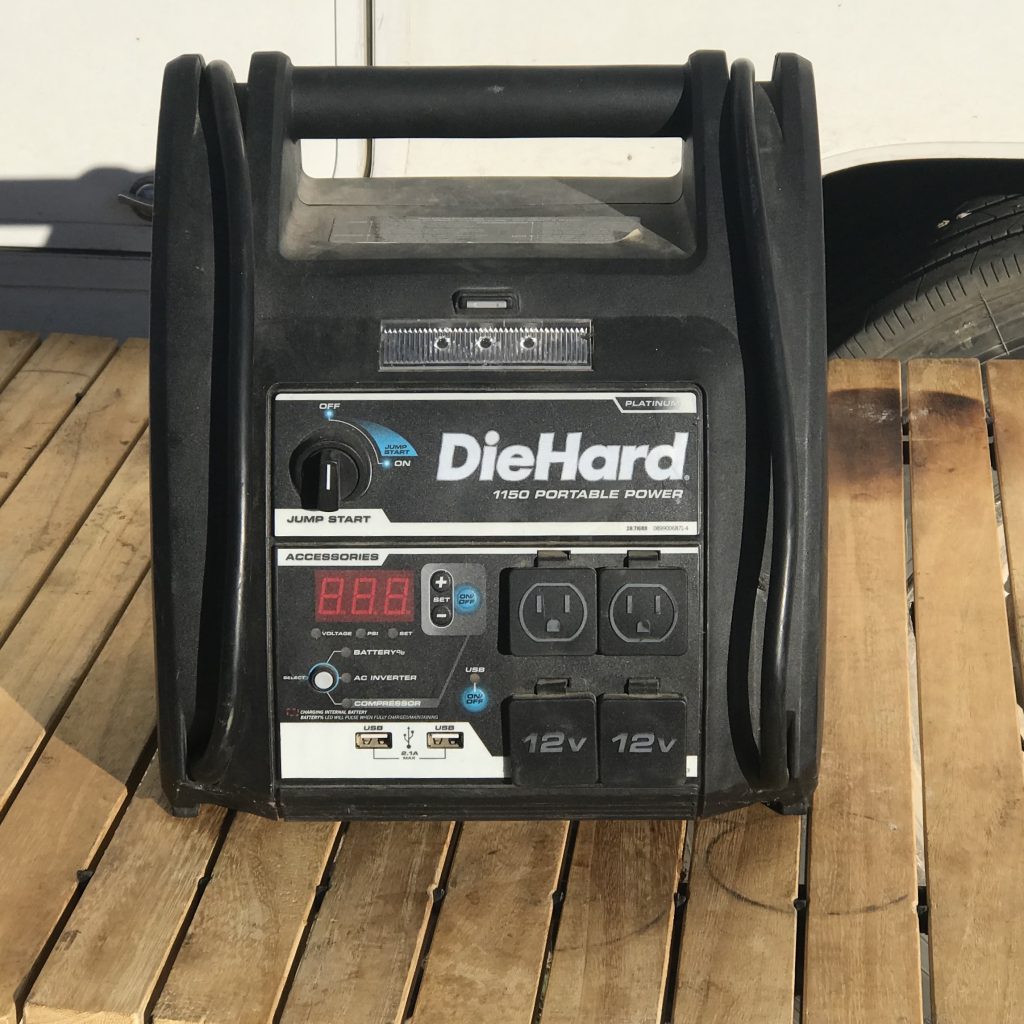
This is one example of a backup power supply. This unit can jump start your battery, pump air into a tire and charge your phone.
